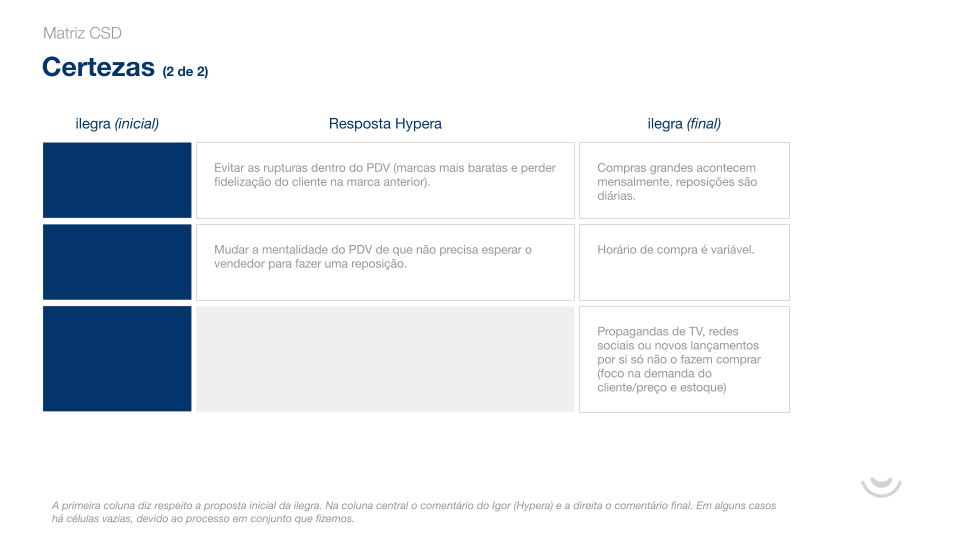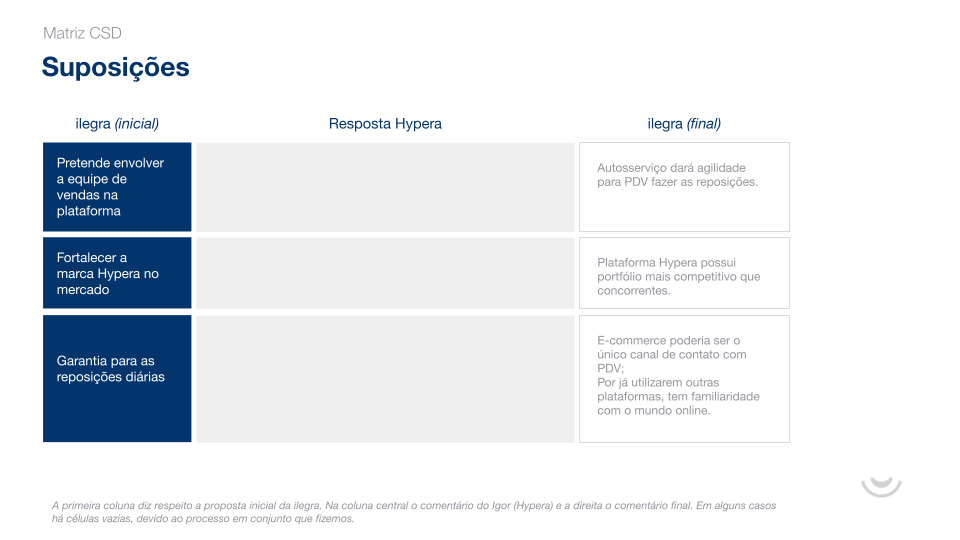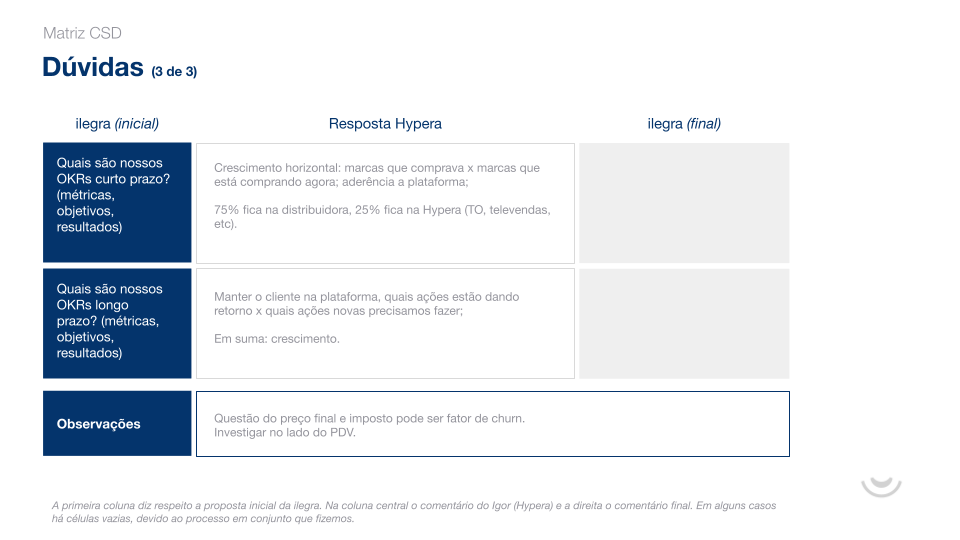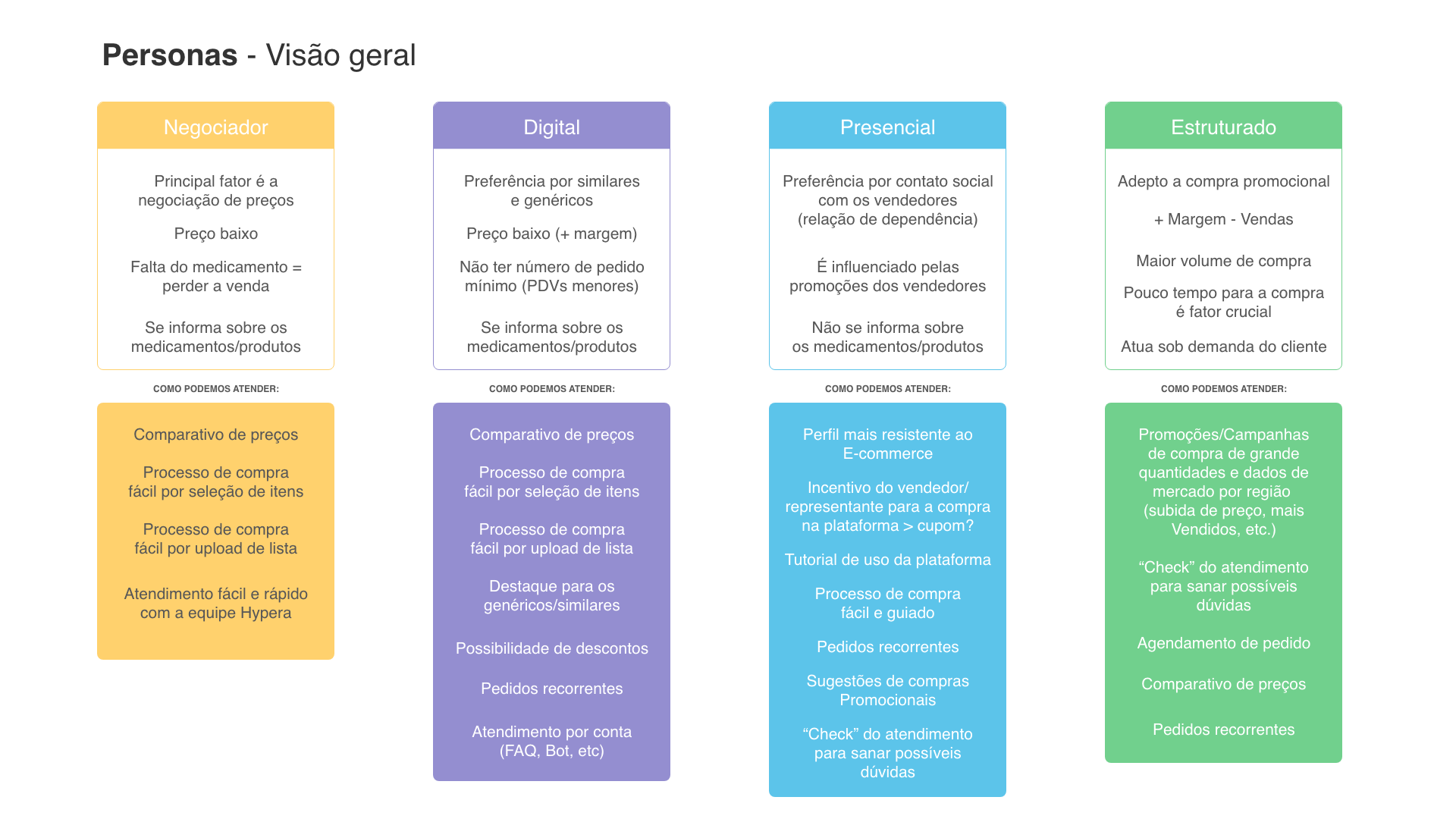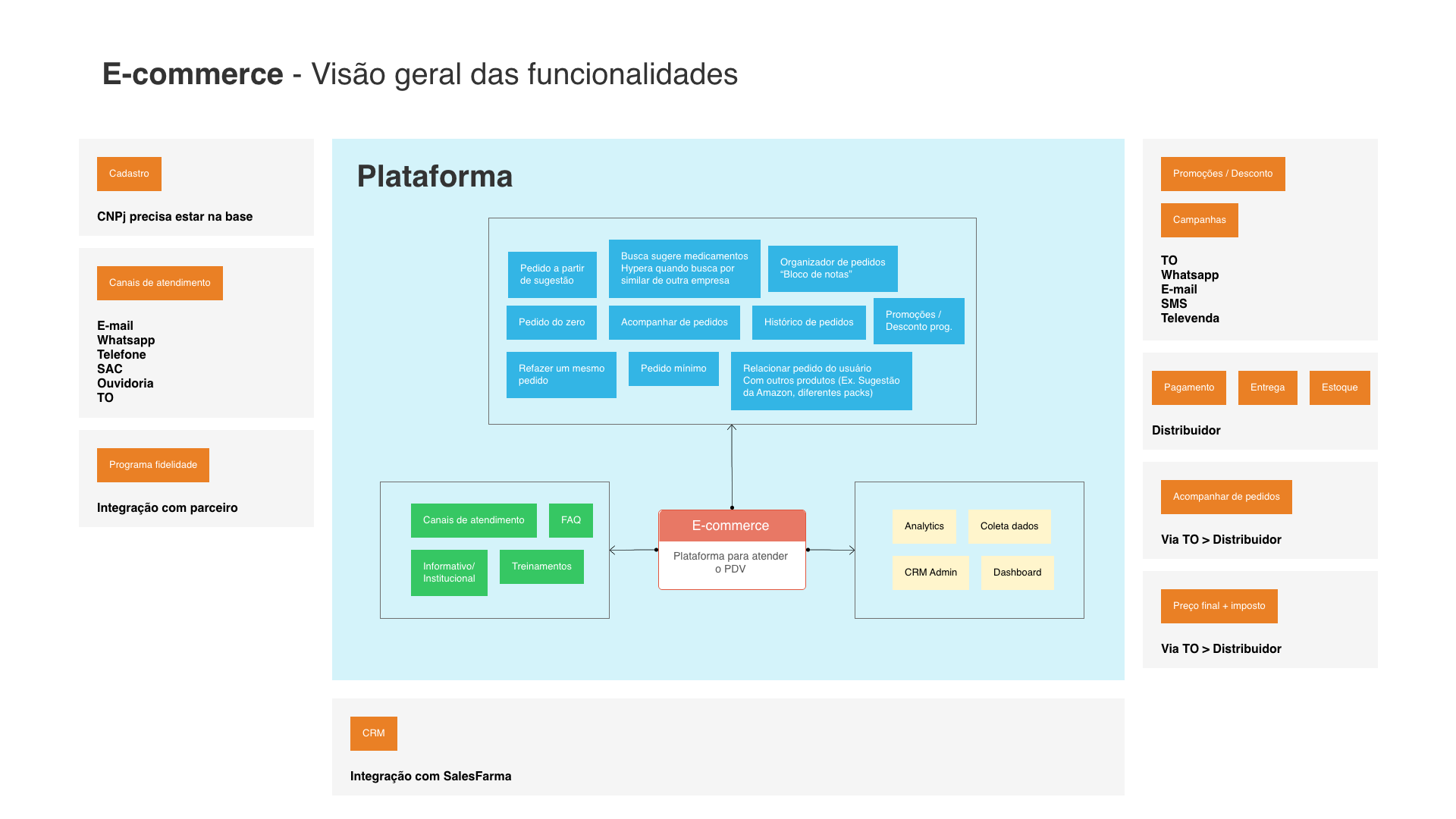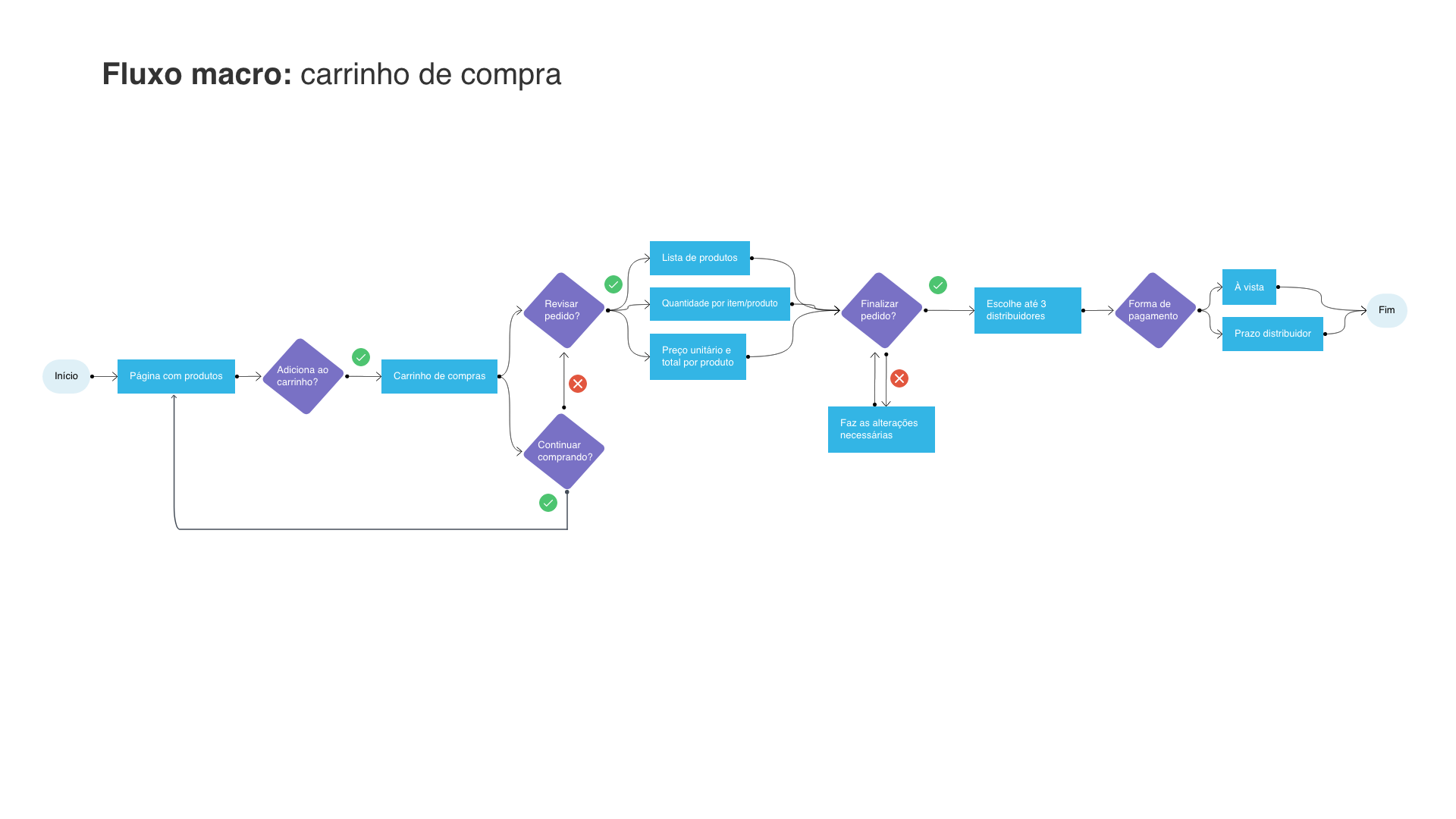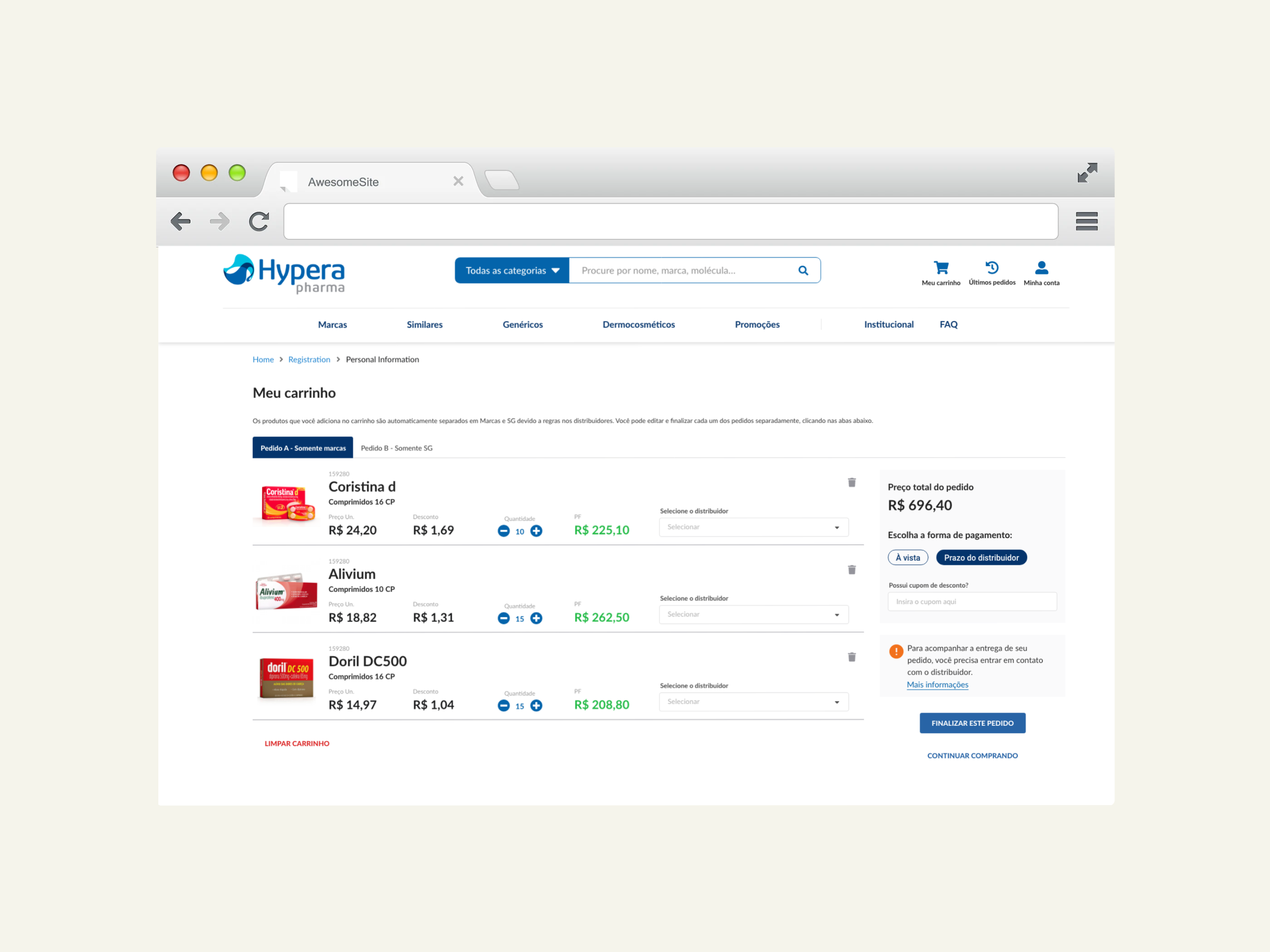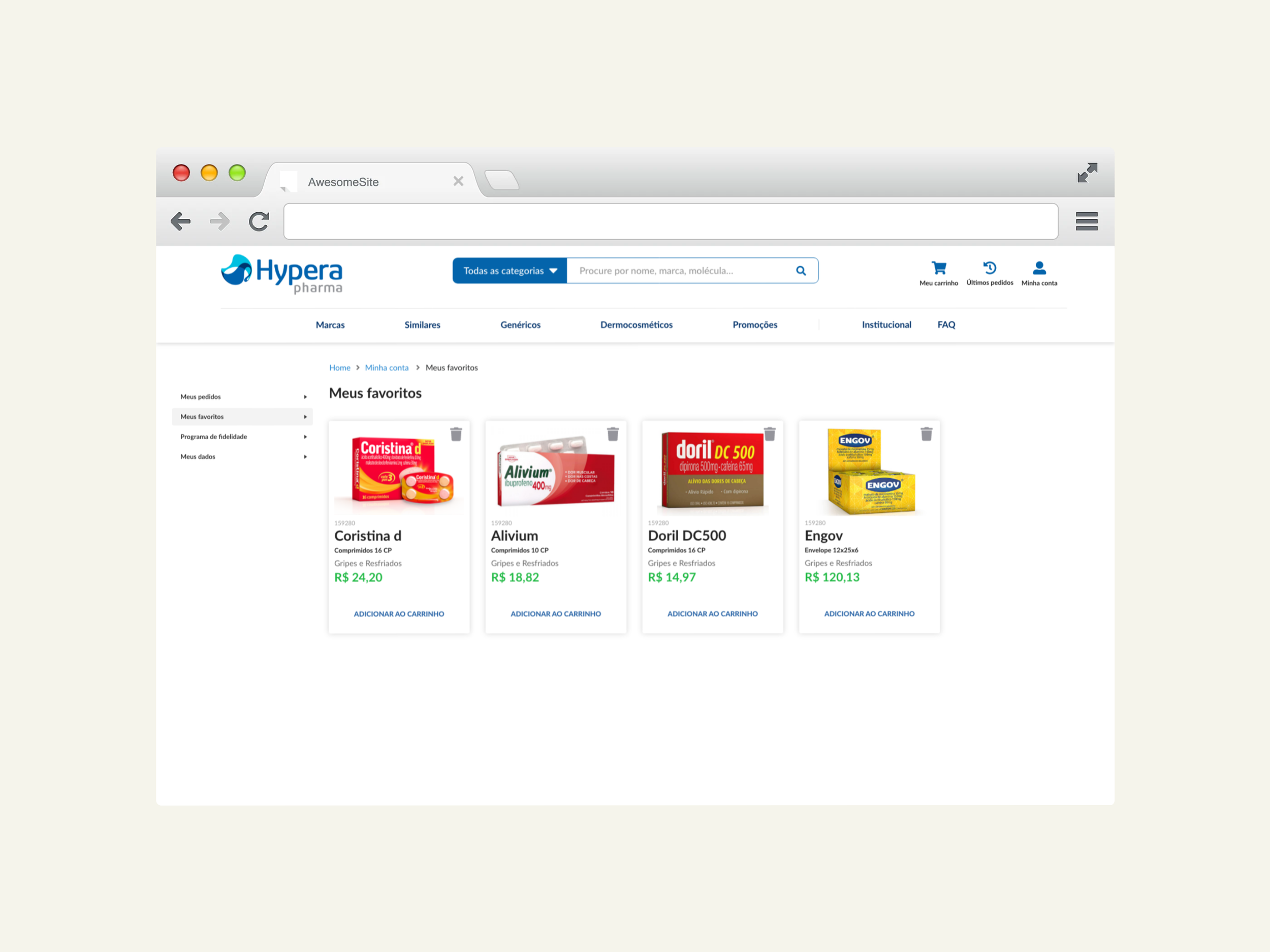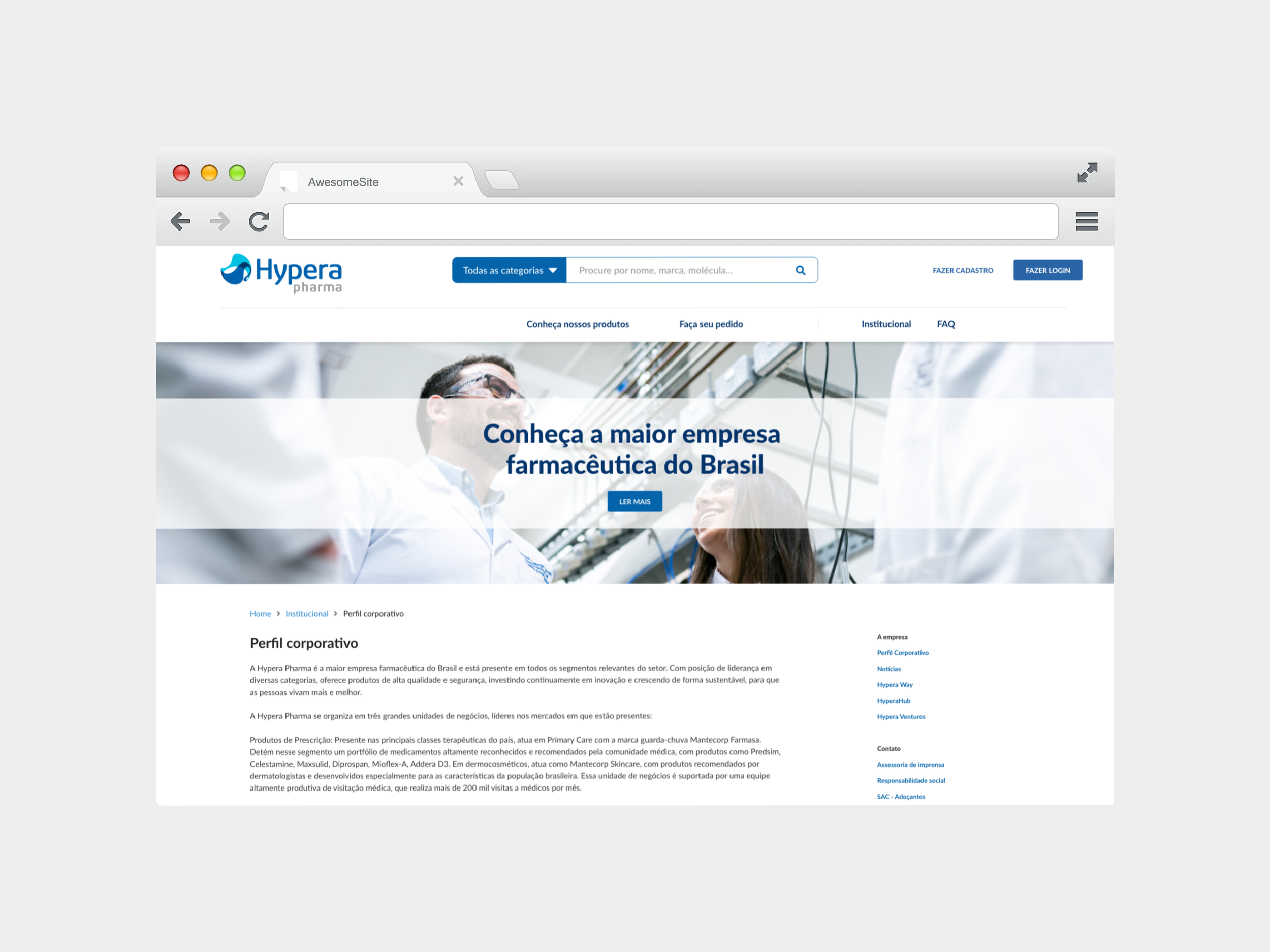
Hyera Pharma
B2B E-commerce platform
Introduction & Context
Project Overview
Modernize Hypera Pharma’s existing legacy B2B e-commerce platform to improve usability, performance, and scalability, while expanding its scope to include a B2C channel. The goal is to create a seamless, secure, and engaging digital experience for both business clients and individual consumers.
Background
Hypera Pharma is one of Brazil’s largest and most diversified pharmaceutical companies, with a broad portfolio including prescription drugs, over-the-counter medicines, and nutraceuticals. The company operates in retail and non-retail channels, serving hospitals, clinics, distributors, and consumers nationwide.
Business Goals and Objectives
Modernize the e-commerce platform to support increased traffic and transactions.
Open the platform to B2C users, enabling direct consumer purchases.
Enhance user experience with intuitive navigation, personalized product recommendations, and streamlined checkout.
Increase online sales revenue within the first year post-launch.
Improve customer satisfaction and reduce support requests related to the e-commerce platform.
Research & User Insights
Target User Personas
B2B Users: Pharmaceutical distributors, hospital procurement managers, and retail pharmacy buyers requiring bulk ordering and account management features.
B2C Users: Individual consumers seeking over-the-counter medicines, vitamins, and wellness products with easy browsing and purchase options.
User Needs, Pain Points, and Motivations
B2B users need efficient bulk ordering, order tracking, and invoice management.
B2C users seek simple navigation, clear product information, and fast checkout.
Both groups require secure payment options and data privacy assurances.
Legacy platform issues include slow load times, outdated UI, and limited mobile responsiveness.
Competitive Analysis
Competitors offer mobile-friendly, personalized e-commerce experiences with integrated customer support and loyalty programs.
Hypera’s opportunity lies in leveraging its strong brand and product portfolio with a modern, unified platform.
Design Process & Methodology
Approach and Design Principles
Prioritize accessibility and compliance with WCAG standards.
Use modular design systems to ensure scalability and consistency.
Key Steps
Conduct stakeholder workshops and user interviews to gather detailed requirements.
Develop wireframes and interactive prototypes for both B2B and B2C user flows.
Iterate designs based on usability testing feedback.
Tools and Platforms
Figma for UI/UX design and prototyping.
React.js and Next.js for frontend modernization.
Node.js and microservices architecture for backend scalability.
Integration with SAP ERP for inventory and order management.
Solution & Implementation
Final Design Concepts
Clean, modern interface with clear product categorization and search functionality.
Personalized dashboards for B2B clients showing order history, invoices, and reorder options.
B2C storefront with curated product recommendations and promotional banners.
Interaction Flows and User Journeys
B2B bulk order placement with multi-step validation and approval workflows.
B2C streamlined checkout with guest and registered user options.
Account management flows, including profile updates, payment methods, and order tracking.
Accessibility and Usability Considerations
Keyboard navigation and screen reader compatibility.
High contrast themes and scalable fonts.
Performance optimizations to reduce load times under 3 seconds.
Testing & Iteration
Usability Testing Methods
Remote moderated sessions with B2B clients and B2C consumers.
Load and performance testing to ensure scalability.
Security audits focusing on data protection and payment processing.
Findings and Changes
Simplified checkout flow reduced cart abandonment in testing.
Enhanced product filtering and search improved product discovery.
Added multi-factor authentication to strengthen security.
Validation Against Goals
Positive feedback on improved speed and usability.
Compliance confirmed with LGPD and PCI DSS standards.
Results & Impact
Anticipated increase in online sales within 6 months.
Improved customer satisfaction scores and reduced support tickets related to ordering.
Strengthened brand reputation as a digital leader in pharmaceutical e-commerce.
Additional Elements
Challenges and Solutions
Migrating legacy data without disrupting ongoing operations required phased rollout and parallel systems.
Balancing complex B2B workflows with simple B2C experiences necessitated flexible design systems.
Personal Contributions and Team Collaboration
Led UX research and design strategy, coordinated cross-functional teams including developers, QA, and business specialists.
Facilitated workshops to align business and technical stakeholders.



